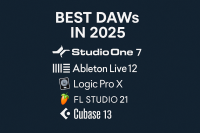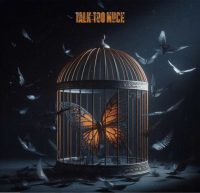For indie artists, landing on a Spotify playlist can feel like winning the lottery—but it doesn’t have to be pure luck. In 2025, getting playlisted is a mix of smart pitching, perfect timing, and knowing how to speak the curator’s language. Whether you’re aiming for official editorial playlists or targeting influential independents, here’s how to turn your next release into a discovery magnet.
Step 1: Timing Is Everything—Pitch Early
Spotify allows artists to submit unreleased tracks for editorial consideration via Spotify for Artists. The golden rule? Submit at least 7 days before release, but ideally 2 to 3 weeks ahead. This gives Spotify’s editorial team time to consider your track—and lets their algorithmic playlists (like Release Radar and Discover Weekly) start working in your favor from day one.
📌 Submit here via Spotify for Artists
Step 2: Nail Your Pitch Like a Pro
Your pitch is your elevator moment—make it count. When submitting on Spotify for Artists, describe your song accurately (genre, mood, instrumentation), but go further. Mention your story, the inspiration, your audience, any press coverage or upcoming shows. Highlight what makes your track stand out—without exaggeration.
Here’s a simple pitch formula that works:
🎯 “This is a soulful Afro House track inspired by late-night sessions in Paris. It blends analog synths with tribal percussion, made for dancefloor lovers and sunset vibes. Supported by [X blog] and part of a mini tour across France this summer.”
Step 3: Use Playlist Pitching Platforms
Don’t rely on Spotify alone. Submit your track to independent curators who run popular playlists with thousands (sometimes millions) of followers.
🎯 SubmitHub – lets you pitch to bloggers, playlist curators and influencers. You get direct feedback, and premium credits let you skip the line.
🎯 Groover – a French-founded platform where artists can pitch music to curators, labels, radios and professionals. Guaranteed to get listened to within 7 days.
🎯 Daily Playlists – helps you submit your music to user-generated playlists, for free.
Pro tip: Target playlists that fit your exact sound. Sending your techno track to a chill indie curator is a fast track to rejection.
Step 4: Build Personal Connections with Curators
Find playlist owners via social media or LinkedIn. A genuine DM with a short message, the right vibe, and a streaming link can go further than a cold form submission. Be human. If they don’t respond, don’t spam—stay professional and try again with another track.
Step 5: Boost Your Release with Pre-Saves and Momentum
Curators are more likely to add tracks that already show traction. A pre-save campaign (using tools like Hypedit or ToneDen) helps create buzz before launch. Also, encourage fans to save the track, add it to their own playlists, and share it—it signals to Spotify that your song is engaging.
Step 6: Don’t Underestimate Algorithmic Playlists
Getting added to Release Radar, Discover Weekly or Radio playlists can generate thousands of streams passively. These are driven by user behavior—so focus on engagement, not just exposure. When fans save your song, listen to it in full, or replay it, the algorithm takes notice.
Step 7: Stay Consistent and Patient
One playlist doesn’t make a career—but consistency does. Release regularly, keep pitching, and stay visible. Over time, your presence grows and curators start recognizing your name. Playlist placement is a snowball effect—the more you’re on, the more you’ll be added to.
Final Thought
Playlisting isn’t magic—it’s strategy. When you combine a great track with the right pitch, timing, and tools, doors open. In 2025, independence is no excuse to go unnoticed. With the right approach, your next release could be one click away from serious exposure.
![]()














